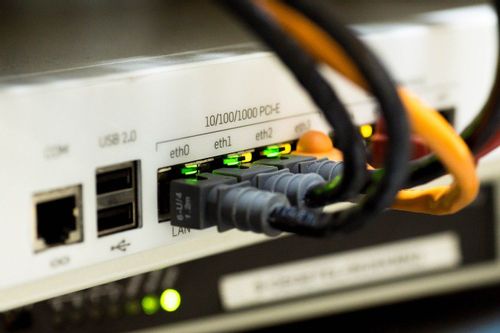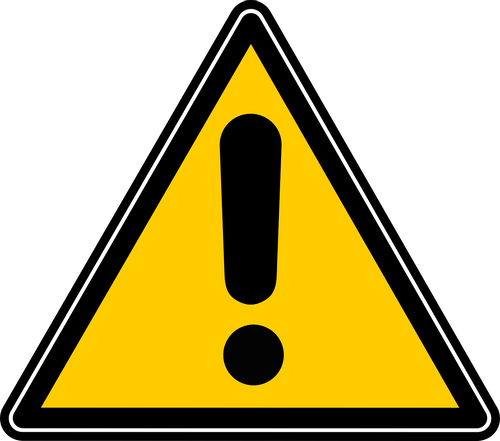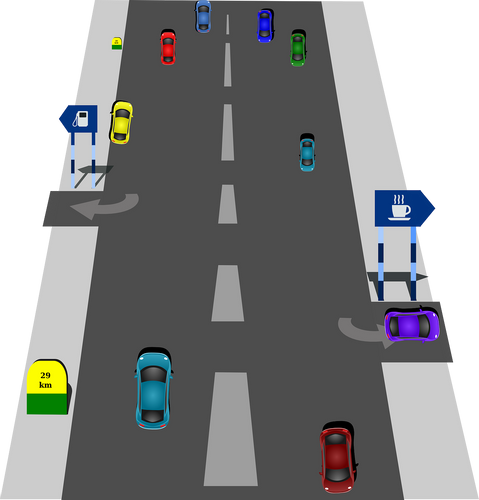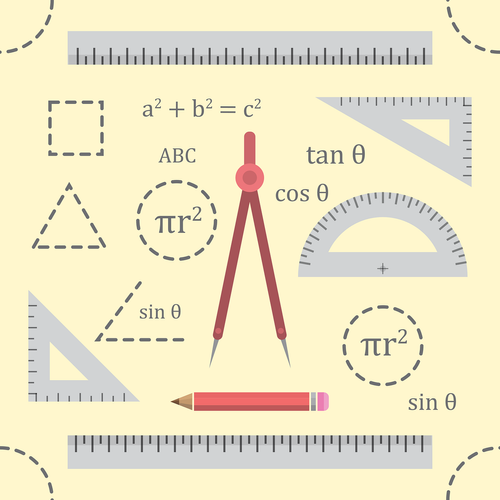Standards Packages
iTeh together with SIST has developed and compiled a comprehensive collection of standard packages to support your standard requirements. Our packages cover an array of content that includes quality management, risk management, road vehicles, machine safety, and much more. With over 200 packages to choose from, you are sure to find a collection to suit your standard needs.
Latest Standards
This document provides guidance for the determination and development of competencies necessary to achieve an organization's compliance management system objectives. It provides guidance for establishing the adequate level of competencies of certain internal functions and third parties. This document is applicable to all organizations regardless of the type, size and nature of the activity, as well as whether the organization is from the public, private or non-profit sector. This document does not add to, change or otherwise modify requirements for compliance management system or any other standards.
- Standard19 pagesEnglish languagesale 15% off
- Draft24 pagesEnglish languagesale 10% offe-Library read for1 day
- Draft19 pagesEnglish languagesale 15% off
- Draft19 pagesEnglish languagesale 15% off
This document establishes principles and an evaluation indicator framework for assessing the effectiveness of a compliance management system. This includes evaluation criteria for specified indicators. This document also provides guidance as well as suggestions on the evaluation model. The guidance provided in this document aims to support the monitoring, measurement, analysis and evaluation of a compliance management system. It aims to support management review of the compliance management system to foster continual improvement. It does not add to, change or otherwise modify requirements for compliance management systems or any other standards. This document is applicable to the activities for evaluating the effectiveness of the compliance management system in all organizations, regardless of the type, size and nature, including organizations from the public, private or non-profit sector.
- Standard43 pagesEnglish languagesale 15% off
- Draft41 pagesEnglish languagesale 10% offe-Library read for1 day
- Draft43 pagesEnglish languagesale 15% off
- Draft43 pagesEnglish languagesale 15% off
The present document defines multiple profiles for PAdES digital signatures which are digital signatures embedded within a PDF file.
The present document contains a profile for the use of PDF signatures, as described in ISO 32000-2 [1] and based on CMS digital signatures [i.6], that enables greater interoperability for PDF signatures by providing additional restrictions beyond those of ISO 32000-2 [1]. This first profile is not related to ETSI EN 319 142-1 [4].
The present document also contains a second set of profiles that extend the scope of the profile in ETSI EN 319 142-1 [4], while keeping some features that enhance interoperability of PAdES signatures. These profiles define three levels of PAdES extended signatures addressing incremental requirements to maintain the validity of the
signatures over the long term, in a way that a certain level always addresses all the requirements addressed at levels that are below it. These PAdES extended signatures offer a higher degree of optionality than the PAdES baseline signatures specified in ETSI EN 319 142-1 [4]. The present document also defines a third profile for usage of an arbitrary XML document signed with XAdES signatures that is embedded within a PDF file. The profiles defined in the present document provide equivalent requirements to profiles found in ETSI TS 102 778 [i.10]. Procedures for creation, augmentation, and validation of PAdES digital signatures are out of scope and specified in ETSI EN 319 102-1 [i.11]. Guidance on creation, augmentation and validation of PAdES digital signatures including the usage of the different attributes is provided in ETSI TR 119 100 [i.9]. The present document does not repeat the base requirements of the referenced standards, but instead aims to maximize interoperability of digital signatures in various business areas.
- Standard32 pagesEnglish languagesale 15% off
- Standard32 pagesEnglish languagesale 15% off
- Standard32 pagesEnglish languagesale 10% offe-Library read for1 day
IEC 60684-2:2025 gives methods of test for flexible insulating sleeving, including heat-shrinkable sleeving, intended primarily for insulating electrical conductors and connections of electrical apparatus, although they can be used for other purposes. The tests specified are designed to control the quality of the sleeving but it is recognized that they do not completely establish the suitability of sleeving for impregnation or encapsulation processes or for other specialized applications. Where necessary, the test methods in this document will be supplemented by appropriate impregnation or compatibility tests to suit the individual circumstances. This fourth edition cancels and replaces the third edition published in 2011.This edition constitutes a technical revision.
This edition includes the following significant technical changes with respect to the previous edition:
a) major update of normative references;
b) revision of Clause 5, with amendment of methods for measurements of bore and wall thickness;
c) revision of Clause 11, to clarify that the longitudinal change test is done on expanded sleeving;
d) revision of Clause 28, additional method D for flame propagation testing;
e) revision of Clause 56, additional method for preparation of samples for adhesive peel test;
f) addition of Clause 63, abrasion test method;
g) addition of Clause 64, volume resistivity for semi-conducting materials;
h) addition of Clause 65, outgassing;
i) addition of Clause 66, resistance to weathering.
- Standard104 pagesEnglish languagesale 10% offe-Library read for1 day
- Standard2 pagesEnglish languagesale 15% off
- Draft2 pagesEnglish languagesale 15% off
- Draft2 pagesEnglish languagesale 15% off
This document specifies an event exchange format that defines the encoding of individual events in the interoperability domain. This event format is used to encode events for exchange across the “event bus” within the interoperability domain.
- Standard39 pagesEnglish languagesale 15% off
The present document specifies technical requirements, limits and test methods for Tank Level Probing Radar (TLPR) equipment operating in the frequency ranges 4,5 GHz to 7 GHz, 8,5 GHz to 10,6 GHz, 24,05 GHz to 27 GHz, 57 GHz to 64 GHz and 75 GHz to 85 GHz. Tank Level Probing Radar equipment in the scope of the present document consist of a combined transmitter and receiver and are equipped with an integral or dedicated antenna provided and specified by the equipment manufacturer. Further details of the covered TLPR equipment can be found in clause 4.2 of the present document. Technical and regulatory requirements for TLPR are provided in European Commission Implementing Decision (EU) 2025/105 [i.5].
NOTE: The relationship between the present document and essential requirements of article 3.2 of Directive 2014/53/EU [i.1] is given in Annex A.
- Standard45 pagesEnglish languagesale 15% off
- Standard46 pagesEnglish languagesale 15% off
- Standard46 pagesEnglish languagesale 10% offe-Library read for1 day
This document defines the standard mechanical interface dimensions for the type of SAC family of connectors.
- Standard34 pagesEnglish languagesale 10% offe-Library read for1 day
IEC 61169-1-9:2025 specifies test methods for the safety wire hole pull-out of RF connectors.
This document is applicable to the connectors with safety wire holes.
- Standard12 pagesEnglish languagesale 10% offe-Library read for1 day
This document describes a classification of non-metallic blast-cleaning abrasives for the preparation of steel substrates before application of paints and related products. It specifies the characteristics which are required for the complete designation of such abrasives. This document applies to abrasives supplied in the new or unused condition only. It does not apply to abrasives either during or after use. NOTE Although this document has been developed specifically to meet requirements for preparation of steelwork, the properties specified will generally be appropriate for use when preparing other material surfaces, or components, using blast-cleaning techniques. These techniques are described in ISO 8504-2.
- Standard4 pagesEnglish languagesale 15% off
- Draft4 pagesEnglish languagesale 15% off
- Draft4 pagesEnglish languagesale 15% off
- Amendment11 pagesEnglish languagesale 10% offe-Library read for1 day
- Standard7 pagesEnglish languagesale 15% off
The present document specifies technical characteristics, limits and methods of measurements for Ultra Short Range Communication (USRC) equipment operating in the 57 GHz to 64 GHz frequency range. Further details for the covered Ultra Short Range Communication (USRC) equipment can be found in clause 4.2 of the present document.
NOTE: The relationship between the present document and essential requirement of article 3.2 of Directive 2014/53/EU [i.4] is given in Annex A.
- Standard35 pagesEnglish languagesale 15% off
- Standard35 pagesEnglish languagesale 15% off
- Standard35 pagesEnglish languagesale 10% offe-Library read for1 day
This document specifies the method for the determination of the apparent relative density of coke, i.e. the ratio of the mass of a volume of dry coke to the mass of an equal volume of water.
- Standard6 pagesEnglish languagesale 15% off
- Draft6 pagesEnglish languagesale 15% off
- Draft6 pagesEnglish languagesale 15% off
This document specifies computational methods for determining the acoustical source level of projectile sound and its one-third octave band spectrum, expressed as the sound exposure level for nominal mid-band frequencies from 12,5 Hz to 10 kHz. It also specifies a method on how to use this source level to calculate the sound exposure level at a receiver position. Results obtained with this document can be used as a basis for assessment of projectile sound from shooting ranges. Additionally, the data can be used to determine sound emission or immission from different types of ammunition and weapons. The prediction methods are applicable to outdoor conditions and straight projectile trajectories. Two computational methods are given to determine the acoustical source level: one for streamlined projectile shapes and one for non-streamlined shapes, such as pellets.
- Standard41 pagesEnglish languagesale 15% off
- Standard43 pagesFrench languagesale 15% off
- Draft41 pagesEnglish languagesale 15% off
- Draft41 pagesEnglish languagesale 15% off
- Draft46 pagesFrench languagesale 15% off
The present document applies to Digital Fixed Radio Systems (DFRS) in point-to-point operation with integral and external antennas in the frequency range of 1 GHz to 86 GHz corresponding to the appropriate frequency bands 1,4 GHz to 86 GHz as described in ETSI EN 302 217-2 [16], annex B to annex L. The present document summarizes:
• all characteristics, principles and, of utmost importance, terms and definitions that are common to all P-P equipment and antennas and its consultation is necessary when using all other parts of ETSI EN 302 217 series;
• all system-dependent requirements for Point-to-Point (P-P) equipment. These requirements are introduced in two different clauses sub-sets:
- Main requirements are requirements that are also related to the "essential requirements" under article 3.2 of Directive 2014/53/EU [i.1] and further detailed in the Harmonised Standard ETSI EN 302 217-2 [16].
- Complementary requirements are requirements that are not related to essential requirements under article 3.2 of Directive 2014/53/EU [i.1]. Nevertheless they have been commonly agreed for proper system operation and deployment when specific deployment conditions or compatibility requirements are present. Compliance to all or some of these requirements is left to manufacturer decision.
Health and safety requirements and EMC conditions and requirements (articles 3.1a and 3.1b of Directive 2014/53/EU [i.1]), as well as other special conditions and requirements (articles 3.3(a) to 3.3(i) of Directive 2014/53/EU [i.1]) are not considered in the ETSI EN 302 217 series.
- Standard79 pagesEnglish languagesale 15% off
- Standard80 pagesEnglish languagesale 15% off
- Standard80 pagesEnglish languagesale 10% offe-Library read for1 day
The present document specifies the technical requirements, limits and test methods for material sensing devices using UWB technology exterior material sensing devices for ground based vehicles below 10,6 GHz. The present document only covers non-contact based UWB material sensing devices with antenna connectors according to ECC/DEC(07)01 [i.1] and Commission Implementing Decision (EU) 2024/1467 [i.2]. Further details of the covered EUT for external material sensing applications for ground-based vehicles and the related categories can be found in clause 4.2 of the present document.
NOTE: The relationship between the present document and essential requirements of article 3.2 of Directive 2014/53/EU [i.3] is given in annex A.
- Standard49 pagesEnglish languagesale 15% off
- Standard49 pagesEnglish languagesale 15% off
- Standard49 pagesEnglish languagesale 10% offe-Library read for1 day
IEC 63378-3:2025 specifies the thermal circuit network model of discrete (TO‑243, TO‑252 and TO‑263) packages, which is used in the transient analysis of electronic devices to estimate precise junction temperatures without experimental verification.
This model is intended to be made and provided by semiconductor suppliers and to be used by assembly makers of electronic devices.
- Standard17 pagesEnglish languagesale 10% offe-Library read for1 day
Field devices are a key component in intelligent transport systems (ITS). Field devices include traffic signals, message signs, weather stations, traffic sensors, roadside equipment for connected ITS environments, etc. The ISO 26048 series defines data that can be used to manage field devices, including device configuration, control and monitoring. Field devices can be quite complex, necessitating the standardization of many data concepts for exchange. As such, the ISO 26048 series is divided into several individual parts. This document (ISO/TS 26048-1) introduces the ISO 26048 series, provides content that is normatively referenced in subsequent parts, and defines data that is applicable to the management of a wide range of field devices. The scope of the ISO 26048 series does not define the logic used by the management station, the underlying protocols used to exchange the defined data elements, or internal design of the field device. However, the ISO 26048 series does define functional requirements on the interface and assumes an interface based on an SNMPv3 environment as specified by ISO 15784-2. NOTE Many of the concepts defined in this document were derived from NTCIP 1103[ REF Reference_ref_11 \r \h 1 08D0C9EA79F9BACE118C8200AA004BA90B0200000008000000110000005200650066006500720065006E00630065005F007200650066005F00310031000000 ] and NTCIP 1201[ REF Reference_ref_12 \r \h 2 08D0C9EA79F9BACE118C8200AA004BA90B0200000008000000110000005200650066006500720065006E00630065005F007200650066005F00310032000000 ], however, the design has been updated to better address security concerns. It is expected that future versions of NTCIP will migrate to the design defined in this document.
- Technical specification95 pagesEnglish languagesale 15% off
- Draft95 pagesEnglish languagesale 15% off
- Draft95 pagesEnglish languagesale 15% off
- Draft93 pagesEnglish languagesale 15% off
- Draft93 pagesEnglish languagesale 15% off
This document specifies a lexicon of objects for the interoperability domain (ID). This document specifies ID base objects and their associated properties and input/output event types (i.e. in the form of a list of ID sensor, actuator, and control objects), and object state actions, which can be used to define interoperable application models.
- Standard229 pagesEnglish languagesale 15% off
Benefits

Full Standards Solution
Our catalog includes not only latest standards but also full meta information about related standardization project lifecycle.

Cost Effective
Our PRICE MATCH GUARANTEE policy with multi-level volume discounts gives our clients the best option in the market. In addition, you can get access to the standards for 3, 10, or 30 days.

Stay Notified
Get alerted to the latest revisions and new standards in the Weekly Newsletter. Standards are constantly changing. Don’t miss a revision that can impact your business.
About Us
iTeh Inc is a software development and IT consulting team of professionals who provide consulting, development and implementation of solutions for all types of businesses.
In cooperation, with the Slovenian Institute of Standardization (SIST), we create a unique solution that covers all aspects of the lifecycle of Standardization organizations. iTeh Standards is a part of the solution that helps SIST to provide and sell their products to Customers.
iTeh Standards Store is an evolving project, our goal is to build long-term relationships with our customers. We believe in delivering quality services to solve our customers' challenges and define success by exceeding our customers' expectations. We are always ready to listen and our experience allows us to provide our customers with helpful effective suggestions. You can contact us by email.
We are committed to providing the best possible experience for our customers.
Compliance with international standards is increasingly becoming one of the key competitive advantages in the global market. Our company creates all conditions for the most comfortable implementation of new documents and norms in the processes carried out by your organization. Some of the key advantages of working with us are:
- Cost-effective - multi-level discounts and permanent updates of the functions give our clients the best option on the market.
- e-Library - access to standards for a period of time of your choice. It is a cost-effective solution for keeping updated with the newest standards.
- Company-wide documents - create a company account and connect all employees with access to purchased standards, e-Library documents, and packages.
- All in one spot - all purchased standards are kept in one place with controlled access by the account administrator.
- Client-centric - providing quality consulting is the prerogative and incentive to create new products that accompany your success and scale.
- 24 / 7 client support
We are dedicated to building mutually beneficial and long-term relationships with our clients. That is why our team focuses on creating services to help our customers develop and achieve new productive results.
























